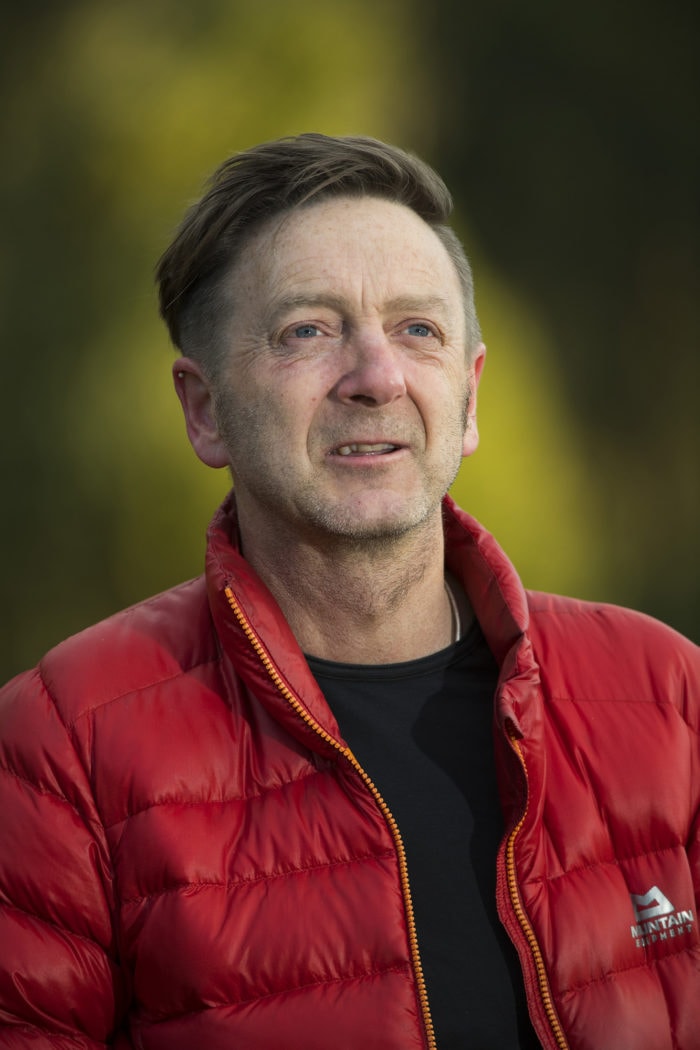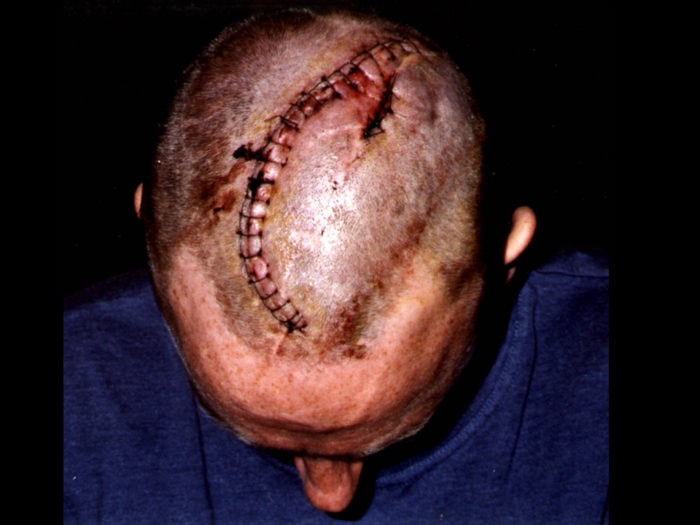The Paul Pritchard story

“The brakes are smoking!” I shouted to Duncan over the noise of screaming disc brakes as I tried to control a 75km/h speed wobble on the Alpine Way above Khancoban, near the New South Wales–Victoria border. I was doing my best to hold the tandem-trike steady with my one functioning hand while trying to let my blind stoker (the rear cyclist on a tandem bike) know what was going on. I was his eyes, he was my legs and we were more than 2000km into an adaptive human-powered journey that would take us from the continent’s lowest point to its highest.
I WAS PART of a five-person team, each with a heap of disabilities, attempting to be the first to cycle between Kati Thanda–Lake Eyre and Mt Kosciuszko, on the Lowest to Highest expedition. The team was Walter Van Praag with cystic fibrosis and only 38 per cent lung function; paraplegic Daniel Kojta who pedalled with his hands; Conrad Wansborough who lives with chronic pain after a spinal injury; legally blind Duncan Meerding; and my hemiplegic-epileptic-aphasic-self.
This ride would be the culmination of years of planning and the development of a philosophy of empowerment for people with disabilities. We were all very interested in moving away from the charity model, where people are largely pitied, to the more inclusive social model, whereby people are disabled by barriers in society not by their impairment or difference.
I have used a recumbent trike ever since being released from hospital in Liverpool in the UK in 1998 after spending an entire year there. My then girlfriend, Celia Bull, and I were climbing Tasmania’s infamous Totem Pole, a slender dolerite column at Cape Hauy, when the climbing rope dislodged a block that scythed 25m through the air smashing my skull. This traumatic brain injury resulted in hemiplegia, which is the loss of movement on one side of the body, and aphasia, an inability to comprehend or formulate language.

(Image credit: Matthew Newton)
The rescue was something else. I was hanging upside-down, 1m above the sea, on a 4m-wide by 65m-high needle of rock in a very narrow cleft. Blood was gushing from my head and I was drifting in and out of consciousness. I remember Celia beside me. She got me upright in an arrangement of slings and then climbed back up a rope to a ledge 30m up the Totem Pole. She then proceeded to haul me up to the ledge, which took three hours – her hands had deep gouges caused by the rope. I can only put her effort down to the adrenaline rush one hears about whereby a mother, say, lifts a car off her trapped child. She made me safe on the ledge and then climbed a rope to the pole’s summit, which perceptibly sways in the wind. She then crossed a rope traverse to the cliff edge of the mainland and proceeded to run 8km to Fortescue Bay where there was a telephone – it was in the days before mobile phones.
I was on that ledge for a further seven hours before paramedic Neale Smith abseiled down to me. By the profusion of blood on the ledge, Neale thought it was going to be a corpse recovery. When he saw I was still breathing he knew there was no time to lose. He clipped me to his harness and descended the stack towards a waiting tinnie. But the tinnie was surging against the column of dolerite a full 2m on the swell. So, waiting for the upsurge, Neale cut the rope and we both fell into the boat – quite exciting really.

Paul’s scar. (Supplied)
THUS BEGAN MY YEAR in hospital where I wrote my book The Totem Pole with one finger. It was either that or go down to the day-room with the other patients to watch re-runs of The Bold and the Beautiful. I was now in a wheelchair, the doctors were struggling to get my fits under control, I was unable to talk and unable to recall the most simple of facts but, paradoxically, just as intelligent as I ever was – so not very! It was akin to being a baby again.
I began to get very depressed at the prospect of never climbing again – so depressed I needed medication. I put all my expedition gear up for sale: I had a room full of ropes, tents, ice-axes and crampons. I remember breaking down in tears when one person came to buy my ski-mountaineering equipment.
However, it was during neurological rehabilitation that I began to realise I’d had a good teacher in the mountains and, having come so close to death, I learnt how to accept the fact that I was now paralysed. With this acceptance came the necessary strength to overcome my misfortune. I had learnt to let life’s inevitable knocks wash over me and was about to embark on the longest expedition I would ever go on – my second life.

Paul in hospital. (Supplied)
When I walked 100m around the rehab centre I realised that, with perseverance, I might be able to claw back some tiny semblance of the life I had before.
I slowly got back to the mountains again. First hill-walking in Wales, then three trips to Africa – climbing 1000m higher each time and culminating in an all-disabled expedition to Mt Kilimanjaro in Tanzania seven years after the accident.
Then, a few years ago it became clear to me that it was important to finish what I had started almost 20 years earlier.
By this time I had made Tasmania my home. The tower that had caused me so much pain needed to be revisited. But first there were the technicalities to consider.
I had long thought it impossible to climb a 65m rope with only one hand and one foot. But a friend suggested a system that might work and together we set about developing a rope-ascending rig.
As soon as I revealed my plans to friends everybody got on board, and in 2016 ten people helped carry water, ropes and climbing equipment out to Cape Hauy. We bivouacked under the stars, and the next morning, after some gluey porridge, descended to the abseil point. All my nervousness disappeared as I clipped onto that rope; my mountaineer’s brain, what was left of it, knew how to act.
I made the exact same swing that I made 18 years earlier. I even caressed the rock scar, the hole where the rock had fallen from. All the while, I had the best support from Steve Monks, my leader.
About three-quarters of the way up the Totem Pole my shoulder was starting to hurt and I needed to rest it and shake the fatigue out of my arm. Then, after 126 one-armed pull-ups, I collapsed onto the summit and an 18-year circle was finally closed.

The route.
I CONTINUE TO CLIMB but it is painful and I often come back down all gashed and covered in blood, because I have to drag my spastic leg and arm up the rock. So, over the years I have taken to expeditioning by trike because it is much more bearable.
The first time I undertook a serious adventure by trike was cycling to Everest Base Camp from Lhasa in Tibet.
I rediscovered that sense of freedom that I’d had in my past life as a big-wall climber.
After that trip I pondered other human-powered vehicle possibilities in the vastness of outback Australia. This country is perfect for long trike journeys, and about four years ago I had a light-bulb moment: “Wouldn’t it be great to cycle between the extremities of the Australian continent?”
It took years of planning, however, finding the right team, doing route reconnaissance missions and finding the right sponsor. Luckily, World Expeditions came on board – we could not have achieved the Lowest to Highest expedition without them.
As we sat atop Kosciuszko after 43 days in the saddle from Lake Eyre we pondered what we’d achieved. Through our ride we had delivered a message: people with disabilities are capable of world firsts, not just ‘first disabled challenges’.
What is more, we challenged commonly held misconceptions about what disabled people can and can’t do. For people with a disability it is a powerful message: that we can have agency in our own lives.




